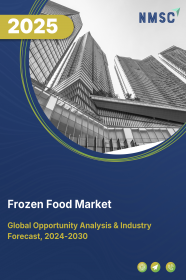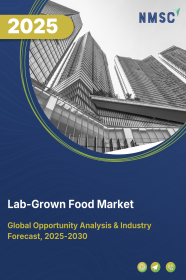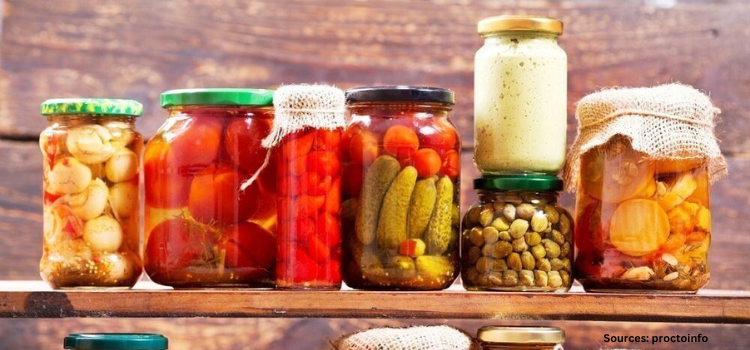
Frozen Food Market by Type (Raw, Half-Cooked, and Ready to Eat), by Product (Fruits & Vegetables, Readymade Meals, Seafood, Meat & Poultry, Snacks & Bakery Products, Dairy Products, Pet Food, and Others), by Freezing Technique (Individual Quick Freezing (IQF), Blast Freezing, Belt Freezing, and Others), and by Distribution channel (Online, and Offline), and by End Users (Food Service Providers, and Households)– Global Opportunity Analysis and Industry Forecast 2022-2030
US Tariff Impact on Frozen Food Market
Trump Tariffs Are Reshaping Global Business
Market Definition
The Frozen Food Market size was valued at USD 190.30 billion in 2021 and is estimated to reach 390.50 billion by 2030, registering a CAGR of 5.4 % from 2022-2030.
Frozen foods are precooked food items that are put together in one package and then frozen until consumed. These foods are kept at a specific temperature without any moisture. The main aim of frozen foods is to make the cooking process easier for consumers by providing a longer shelf life of the food products. These food products are stored at very low temperature for the purpose of transportation until they are ready to be eaten.
Frozen foods are kept under their freezing point to inhibit the growth of bacteria on the surface of the food. Since, microorganisms do not grow when the temperature of the food is below −9.5 °C (15 °F), the need for preservatives is eliminated. Frozen foods include mushrooms, pizzas, and sandwiches among others. In addition, these foods are mainly used in the food service industry such as food outlets, hotels, restaurants, and quick service restaurants.
Market Dynamics and Trends
Increasing demand for frozen food is attributed to its longer shelf-life and durability which makes it highly popular among the masses. Also, the rising rollout of various applications such as blast freezing and belt freezing are widely used in commercial kitchens and in the frozen food industry for fresh produce, ice cream, pre-prepared meals, and vegetables. Therefore, all these factors cumulatively boost the growth of the frozen food market.
Moreover, rising consumer inclination toward convenience food directly impacts the demand for frozen products owing to less time and effort requirements as compared to cooking from scratch. Furthermore, the growing rate of women’s employment, which makes it difficult for women to invest time in cooking drives the market growth globally.
However, lack of cold-chain infrastructure in developing countries along with the rising consumer preferences towards organic and fresh food are expected to restrain the growth of market during the forecast period. On the other hand, growing demand for vegan and plant-based frozen food coupled with the introduction of new applications and platforms for grocery shopping which makes it easier for the consumers to pick their preferred products is expected to create lucrative growth opportunities for the frozen food market in future.
Market Segmentations and Scope of the Study
The frozen food market share is analyzed on the basis of type, product, freezing technique, distribution channel, and geography. On the basis of type, the market is segmented into raw and half cooked. On the basis of product, the market is categorized into ready-made meals, meat & poultry, seafood, vegetables & fruits. On the basis of freezing technique, the market is classified into individual quick freezing (IQF), blast freezing, belt freezing, and others. On the basis of distribution channel, the market is divided into supermarket/hypermarket, convenience store, online channels, and others. Geographic breakdown and deep analysis of each segment are included for North America, Europe, Asia-Pacific, and RoW.
Geographical Analysis
Europe holds the lion share of global frozen food market and is expected to continue dominating the market during the forecast period. This is attributed to increasing consumption of frozen seafood as a substitute for red meat owing to rich source of proteins, micronutrients and essential fatty acids. According to FranceAgriMer published in 2021, the annual per capita consumption of seafood products in France was estimated at 33.5 kilograms in 2018. Also, the high adoption of frozen food products such as fish, pizza and meat as a part of their main diet due to the hectic lifestyle along with the rising startups including Allplants Ltd. and Strong Rootsdrive will drive the market growth of the market in this region.
On the other hand, North America is expected to show a steady rise in the market due to the increased consumption of gluten-free frozen food products owing to the rising health consciousness among the population in this region. For instance, in August 2021, Real Good Foods Company announced the launch of new frozen items that provide high protein, low carb, grain-free with gluten-free properties to 1,500 Kroger stores nationwide. These products are made with real ingredients that allow the consumer to stay on track with their health and wellness goals. Also, availability of innovative product options in frozen food such as low trans-fat, low-fat multi-grain, whole grain, and low artificial preservative products along with rising demand for these products are expected to drive the market in this region. According to American Frozen Food Institute (AFFI), there has been an increase of 21% in frozen food in 2020. The top-three frozen food categories with largest share include seafood, poultry, and appetizers.
Competitive Landscape
The market comprises of various market players such Cargill, Incorporated, Nestle S.A., Kraft Heinz Company, General Mills, Inc., Ajinomoto Co. Inc., McCain Foods Private Limited, Sumeru Frozen Food, Pal Frozen Foods, Apex Frozen Foods Ltd., ADF Foods Ltd., Unilever PLC, Nomad Foods, Tyson Foods, Inc., Arla Foods, Kellanova.
These market players are adopting various strategies such as acquisition and business expansion across various regions to maintain their dominance in the frozen food market.
For instance, in January 2022, Parkland Corporation acquired M&M food market to accelerate convenience growth. Under this acquisition M&M food market expanded its proprietary food offer, customer reach and innovation pipeline.
Moreover, in July 2021, Nestlé invested USD 100 million for the expansion of manufacturing capabilities of US frozen foods facility to meet the demand in Gaffney, South Carolina. The company had included new production line and expanded the existing one by generating 160 new jobs.
Key Benefits
-
The study provides an in- depth analysis of frozen food market with current trends to elucidate the imminent investment pockets in the market.
-
Current and frozen food market trends are outlined to determine the overall attractiveness and to single out profitable trends to gain a stronger foothold.
-
The frozen food market report provides information regarding key drivers, restraints and opportunities with impact analysis.
-
Quantitative analysis of current market and estimations through 2022-2030 showcase the financial calibre of the market.
-
Porter’s five forces model and SWOT analysis of the industry illustrates the potency of buyers & suppliers participating in the facial wipes market.
-
Value chain analysis in the report provides a clear understanding of roles of stakeholders involved in the value chain.
Key Market Segments
By Type
-
Raw
-
Half Cooked
-
Ready to Eat
By Product
-
Fruits & Vegetables
-
Fruits
-
Berries
-
Tropical Fruits
-
Citrus Fruits
-
Grapes
-
Stone Fruits
-
Others
-
-
Vegetables
-
Peas
-
Broccoli
-
Cauliflower
-
Carrot
-
Beans
-
Mushroom
-
Avocado
-
Corn
-
Others
-
-
-
Readymade Meals
-
Seafood
-
Meat & Poultry
-
Snacks & Bakery Products
-
Dairy Products
-
Pet Food
-
Others
By Freezing Technique
-
Individual Quick Freezing (IQF)
-
Blast Freezing
-
Belt Freezing
-
Others
By Distribution channel
-
Online
-
Offline
-
Supermarket/Hypermarket
-
Convenience Stores
-
Speciality Stores
-
By End Users
-
Food Service Providers
-
Restaurants & Hotels
-
Caterers
-
-
Households
By Geography
-
North America
-
US
-
Canada
-
Mexico
-
-
Europe
-
UK
-
Germany
-
France
-
Italy
-
Spain
-
Rest of Europe
-
-
Asia-Pacific
-
China
-
India
-
Japan
-
South Korea
-
Australia
-
Rest of Asia-Pacific
-
-
RoW
-
UAE
-
Saudi Arabia
-
South Africa
-
Brazil
-
Key Players
-
Cargill, Incorporated
-
Nestle S.A.
-
Kraft Heinz Company
-
General Mills, Inc.
-
Ajinomoto Co. Inc.
-
McCain Foods Private Limited
-
Sumeru Frozen Food
-
Pal Frozen Foods
-
Apex Frozen Foods Ltd.
-
ADF Foods Ltd.
-
Unilever PLC
-
Nomad Foods
-
Tyson Foods, Inc.
-
Arla Foods
-
Kellanova

















 Speak to Our Analyst
Speak to Our Analyst





















